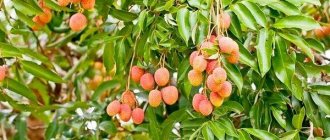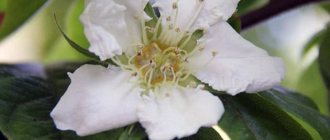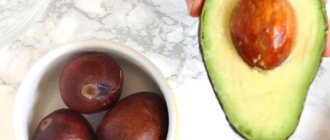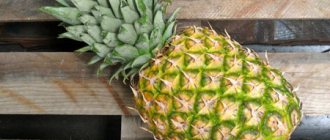Which lemon variety to choose for growing?
To successfully grow lemons, you first need to choose the right variety. Those of them that are used in open ground are too tall and will feel uncomfortable in an apartment. But breeders have developed varieties and hybrids of indoor lemons that are perfect for home greenhouses.
Among the most popular:
- Meyer;
- Pavlovsky;
- Novogruzinsky;
- Genoa;
- Lunario;
- Panderosa;
- Lisbon;
- Eureka;
- Anniversary.
Some of them are successfully grown both in open ground and at home, while others are intended exclusively for indoor cultivation. For example, the Pavlovsky variety is one of the most popular indoor lemons. It is perfectly adapted to home conditions, forgives some mistakes in care and is distinguished by good fruiting. If you don’t have enough experience, then you should start with Pavlovsk lemon.
We can say about Meyer lemon that it is a very productive hybrid with an interesting taste of the fruit. Panderosa is also a hybrid of lemon and citron - at home, a beautiful compact bush, which, however, is not distinguished by abundant fruiting. But Genoa is famous for both the excellent taste of the fruits themselves and their quantity on the tree, but it is quite capricious in care. In general, there is plenty to choose from.
Choosing a pot
Transparent plastic cups are ideal for germinating seeds. They allow you to control the growth of the root system.
What does a lemon sprout look like in plastic containers?
Once the lemon shoot reaches 10 cm in height, it can be transplanted into a permanent pot. The planting container must meet the following requirements:
- Drainage holes. It is worth choosing a pot with a large number of holes to drain excess water. A lemon in a pot with drainage holes will not rot.
- Suitable pot size. It is recommended to choose a flowerpot whose girth is equal to the height of the plant. Seedlings are planted in a flowerpot with a diameter of 10-15 cm.
- Quality materials. Lightweight plastic pots are ideal for small to medium-sized plants. If the decorative lemon is at least 1 m in height, it is better to choose a clay or wooden pot.
Before using old pots, they must be cleaned of salt deposits and disinfected with an alcohol solution (can be replaced with peroxide).
Preparing the seed, soil and proper planting
You can grow a lemon tree yourself from cuttings or buy ready-made seedlings, but we will go the long way and plant a seed. If you cannot find a ripe fruit of the desired variety, you can take a store-bought one.
Lemon should be:
- quite large;
- ripe;
- correct shape;
- without mechanical damage and rot.
Before cutting the lemon and extracting the seeds, you need to prepare containers with soil, since the seeds should not have time to dry before sowing.
You can buy ready-made soil mixtures for citrus fruits in stores or mix them yourself. To do this, you need to take a universal flower soil and add peat to it in a 1:1 ratio, since lemons love slightly acidic soils. It is better to plant seeds in shallow boxes or small pots, for example, in disposable cups. It is necessary to place a high-quality drainage layer of expanded clay or broken brick at the bottom of the containers.
The seed should be planted immediately after it has been removed from the fruit. Even a slightly dried peel significantly reduces the percentage of seed germination, which is not very high for lemons anyway. Usually several seeds are planted at once in order to subsequently select the strongest seedlings. In order for the seeds to germinate better, it is recommended to soak them for 2-3 hours in water before planting. It activates the awakening process and increases the immunity of seedlings.
We plant the prepared seeds to a depth of about 1 centimeter in the soil and water them abundantly. Plantings can be covered with film or transparent containers. Usually the first shoots appear after 2-3 weeks. Until this point, you need to ensure that the container always contains moist, but not soggy soil. In microgreenhouses, as a rule, initial watering is sufficient until the sprouts appear. If, nevertheless, the substrate has dried out, then to moisten it it is advisable to use not a watering can, but a spray bottle.
It is convenient to plant seeds at the very end of winter, so that by the next growing season we will have a tree that can be grafted.
Seed selection
Select fresh lemons and cut in half. From all the extracted seeds, we select the healthiest ones without any damage. It should be borne in mind that most of the seeds will not germinate, so about 20 seeds are harvested.
To speed up germination, experts give a number of tips on how to plant lemons. To do this, you need to free the seeds from the hard crust and place them in a stimulating solution for 10-12 hours.
The result will be stronger immunity of future seedlings and a high ability to tolerate adverse conditions.
Lemon seedling care
While our young lemons are not yet strong, they require constant attention. Mini-greenhouses must be removed periodically, increasing the hardening time of the plants. If they were planted in a common container, it is recommended to replant them no earlier than 3-4 true leaves appear. By this point, it will be possible to identify the strongest seedlings, which we will leave.
The sprouts, along with the root ball, are transferred into a new, larger container, and the voids are filled with fresh soil. In the future, transplantation of lemons at the age of 2-5 years is carried out annually in the spring before active growth begins. Older trees with mature crowns can be replanted every 2-3 years to renew the soil in pots.
Watering
Lemons love good watering and humidity, but do not tolerate stagnant moisture in pots. When there is a shortage of water, this citrus sheds leaves or already formed fruits, and when overwatered, the roots may rot. Therefore, you need to constantly monitor the condition of the soil. Ideally, it should easily stick together into a lump, but not get your hands dirty. In large and deep pots, especially with poor (insufficient or clogged) drainage, it is also possible that the soil is dry on top, but there is a lot of water in the deep layers. Therefore, it will be useful to periodically check the condition of the soil thickness using a dry long wood chip, a wooden stick or a special probe to measure soil moisture.
Water the plants with water at room temperature; if tap water is used, it must be filtered and settled. Watering is carried out along the edge of the pot, slowly saturating the entire volume. After the water appears in the pan, it is completely drained. Lemons also need periodic spraying of the leaves, not only in summer, but also in winter, when the air at home is too dry. The frequency of this procedure depends on the air humidity in the apartment.
Temperature
Lemon is a heat-loving crop. The range of optimal summer temperatures is between 22-25 degrees, winter temperatures - no lower than 20. The worst thing for lemon seedlings is cold drafts from the vents or coolness from window panes. Therefore, if you like to ventilate rooms in winter, you need to make sure that the pots do not stand on the windowsills at this time.
Lighting
Lemons need good lighting for at least 10 hours, even in winter. But you should not place the pot in the open sun - direct rays can burn the leaves. If your lemons are on the south side, then either move them deeper into the room or shade them with loose curtains. In order for the crowns of each tree to develop evenly, you need to periodically turn the pot with the opposite side towards the light source.
Top dressing
Both developing and fruiting lemons will require regular feeding. And the larger and older the tree becomes, the more volume it will need. They begin to feed the seedling at approximately two months of age. Use a specialized one for these purposes. It is suitable for plants of any age at all stages of the growing season. The fertilizer contains an NPK complex in ideal proportions for citrus fruits, microelements in chelated form, vitamins and a growth stimulator. That is, the tree is guaranteed to receive adequate nutrition and be healthy.
Fertilizing is applied in combination with watering once every 1-2 weeks in the summer, and in winter - once a month. But remontant varieties can be fed intensively in winter.
Lemon trimming
To form an optimal crown shape and improve branching, the lemon will need to be pruned regularly.
The main formative prunings on lemon trees are:
- in the first year, the crown bud is pinched when the seedling reaches a height of 20-30 cm;
- in the second year, 3-4 lateral skeletal shoots are left, and the rest are removed;
- in the third year, skeletal branches and shoots of the third order are shortened;
- in subsequent years it will be necessary to remove branches growing inside the crown, as well as diseased and deformed shoots.
Naturally, all pruning work must be carried out with a sterile instrument. It would be a shame if the results of several years of work were lost due to some disease included in the sections.
Fertilizing
Two months after germination, the lemon seedling begins to be fed. The nutritional composition must be added every two weeks until November.
During the cold period, feeding stops. Ash will help preserve the strength of lemon during the winter season. It will be enough to feed the soil with it twice.
Rules for grafting lemon at home
Vaccination is usually carried out at the beginning of the active growing season - from March to May. At this time, the rootstock begins to develop its own buds. Particular attention should be paid to the quality of both the donor tree itself and the grafting material. It is advisable to use cuttings immediately after selection; in extreme cases, you can store them in the refrigerator in a damp cloth for 2-3 days.
Lemons can be grafted from the age of one. There are several main ways:
- copulation (for cutting);
- into the cleft;
- budding (by the kidney).
The first method is good for the smallest seedlings. The cuttings of a fruiting tree should be approximately the same diameter as the rootstock. Make two oblique cuts at the same angle and, aligning them exactly, fix them with tape or tape.
The splitting method is used when the cutting from a fruiting lemon is noticeably thinner than the trunk or shoot on which we are going to graft. In this case, carefully split the rootstock and insert a scion cut into a cone. Then the entire structure is tightly wrapped.
For budding, shoots with sufficiently thick bark are required. It is used if, for some reason, a tree that is already 3-5 years old has not been grafted before. A cut is made on the bark of the rootstock and a scion bud is placed under it so that after fixation only its upper part peeks out.
Will there be fruits?
If you propagate an indoor lemon with seeds, it will begin to bear fruit in 7-9 years, if by cuttings - in 3-4 years, by layering - in 1-2 years.
To speed up fruiting, there are the following methods:
- Cleavage . Make an incision on the seedling and attach a cutting from a fruit-bearing tree, wrap it with electrical tape, cover the top with plastic film, and once it is grafted, remove the film.
- Budding . We cut the seedling to 10 cm and graft a fruit-bearing cutting onto it. Both methods significantly speed up fruiting. The plant may not bloom if the cutting was selected from a tree that has not previously bear fruit.
Lemon fruits have both beneficial and healing and harmful properties. You can read about them in our article.
If the temperature regime is not observed, there is insufficient lighting, irregular pruning and disease damage, the plant will not bear fruit.
You can force a lemon to bloom using cross-pollination during the flowering period within the same variety.
How to care for lemon after grafting
Any grafting for a small tree is stressful. In order for the scion to take root better and the lemon not to get sick, you need to perform several steps:
- remove the tree from the sun;
- you can place the tree in a ventilated mini-greenhouse or cover it with a bag with holes;
- ensure a stable room temperature of 20-25 degrees and high air humidity;
- exclude fertilizing until the scion has taken root and new growth appears.
After the scion has taken root, they begin to gradually increase the time of opening the shelter, adapting the lemon to the natural temperature and humidity for the apartment. If you grafted a tree by budding, then remove the main shoot above the bud.
Temperature conditions for seedling growth
Indoor citrus fruits do not tolerate sudden temperature fluctuations. A window that is open in winter can cause all the leaves to fall off.
In the spring, when all plants begin to bloom, the lemon should be provided with a constant temperature of +14 to + 18 °C. It is not recommended to take seedlings out into the open air.
Important! Lemon does not tolerate direct sunlight as well as complete shade. It is better to place the plant pot in a corner with diffused light.
In winter, the air temperature should be 14-16 °C. When the heating is running, it is better to spray the bush with settled water every day.
In summer, citrus can be placed on the street or balcony if it is not exposed to direct sunlight.
Diseases and pests of lemon
At home, there is no shortage of people who want to “feast” on a lemon tree. Young shoots and bright greenery attract many pests:
- aphids;
- whiteflies;
- thrips;
- scale insects and false scale insects;
- mealybugs;
- ticks.
They are especially dangerous for plants of the first and second years of life. Even local pest damage leads to deformation of shoots and leaf fall, and in severe cases the consequences can be fatal.
For home treatments, it is better to use products based on natural insectoacaricides. This is the case, for example, with natural Dalmatian chamomile extract. It is highly effective, and paralysis of pests occurs immediately after treatment. It is also valuable that the spray can also be used to protect trees that are already bearing fruit. Harvesting ripe lemons is possible almost even on the day of processing.
“Common” diseases of lemons include root rot, late blight, viral mosaic, and tristeza. In most cases, the development of diseases is provoked by improper care - waterlogging, low temperatures, lack of nutrients in the soil. By the way, it is the consequences of incorrect agricultural practices that are often confused with signs of disease. It should be taken into account that many pathogens are carried by pests. Therefore, these problems are usually interrelated.
Planting a lemon seed and even getting the first shoots is, of course, not very difficult. The mortality of seedlings usually begins during or after the first year of their life. During this time, many plant growers lose their first impulse of enthusiasm, and they begin to care for the trees, as they say, carelessly. And to grow a fruit-bearing lemon tree, it is important to do everything on time - to follow the regime, trim the crown on time, and do the vaccinations correctly. And only in this case will you be able to pick the first desired fruit in a few years.
Probability of plant fruiting
The peculiarity of the lemon tree is that there is no clearly defined dormant period. On one bush, at the same time, only blossoming flowers, ovaries, buds, and already ripened fruits are observed.
For full fruiting, the plant needs rest - a cold winter. The pots are taken to a cool place in the house (veranda, loggia, cold window), otherwise the tree will simply shed all its leaves and stop growing.
For proper rest, lemon needs coolness (no higher than 15-160C).
An important point is that during wild flowering, some of the flowers are pinched off. Otherwise, the plant will be exhausted and will not have the strength to fully develop the fruits. The tree may bloom and die.
Preparing the soil for growing at home
A properly selected soil mixture plays a key role in the trouble-free cultivation of lemons. The main requirement for soil is looseness and nutritional value. To sow seeds, you need loose soil with a high phosphorus content. The soil should be neutral or slightly acidic (with a pH of 5.5-6.5), the pH value can be checked using litmus paper or a pH meter.
What fertilizers should I add?
The main component of the soil for lemons should be high-quality manure humus, preferably horse humus, or compost, to which you need to add equal parts of turf soil collected from meadows and leaf humus (from under linden, birch or maple; oaks and poplars are not suitable). The ratio of all components must be 1:1:1. If the mixture turns out to be too dense, you can, based on the size of the volume, add an additional 0.5 parts of coarse washed sand, and if it is too loose, then 0.2 parts of clay. If preparing the mixture is difficult, then you can use simple garden soil or ready-made soil, the main condition being that it does not contain peat. You should also pay attention to the pH indicated on the packaging. Before use, sift the soil through a sieve with 2-4 mm mesh and mix thoroughly.
Crown formation
One of the main conditions for obtaining a fruit-bearing lemon from a seedling is the correct formation of the crown. The question is that fruit buds on seedlings are formed on branches of the fourth and higher orders. The seedling should not be allowed to develop into a stick. Already from the first months after the seedlings emerge, it is necessary to induce branching by pinching the tip of the shoot with tweezers and achieving lateral branching. You need to leave 2-3 leaves on the side branches and pinch the top. From time to time, the lemon tree needs to be turned, but not sharply, no more than 10 degrees, so that the crown develops evenly. You also need to remove fatty shoots in a timely manner - these are separate fast-growing vertical branches. Branches that grow inside the crown must also be removed.











